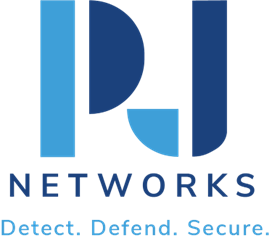Best Practices for Securing Hybrid Cloud Environments
The only way for organizations stacking up billions of pieces of data in the annual era is to take advantage of their combined wealth rather than throwing it all away, while still adopting a hybrid cloud infrastructure circa 2024 that gives them space and capacity to be efficient and dynamic. While this approach has its benefits in terms of operations, it poses several security challenges that need to be dealt with upfront. That being said, there are a lot of examples in the field that you can leverage this blog post to secure your business with Hybrid cloud and make sure it is still child play will navigating through this complex maze.
Hybrid Cloud Security Primer
Hybrid cloud environments combine private and public cloud services giving businesses the ability to manage workloads across these platforms seamlessly. This setup gives you flexibility, cost-savings, and better resource management. Even so, mixing and matching a multitude of cloud infrastructures opens up additional potential security risks.
The goal of hybrid cloud security is to apply a strategic approach to securing data, applications and infrastructure from threats. Hybrid Cloud Security: In addition to preventing data loss and protecting sensitive data, hybrid cloud security can mitigate the unique cyber risks that come with large-scale orchestration spanning public and private clouds.
Common Cloud Hybrid Threats
Businesses moving to these hybrid infrastructures face a variety of security threats that are specific to this environment:
- Data Breaches: A leading threat that organizations face, breaches happen because of easy access to sensitive data through poorly managed access controls or misconfigured cloud services.
- Insecure APIs: Since a multiple number of cloud components communicate together, so it is necessary to secure the API gateway doors and but if not properly secured can provide gateways for attackers.
- Insider Threats: Employees or 3rd party partners that have access to the cloud resources can be a major risk either knowingly or unknowingly.
- Misconfigurations: Organizations often operationalize cloud risk because complex settings and lack of control create a need for active human oversight.
- Multi-Cloud Management Complexity: Security over different clouds becomes inconsistent and introduces chances for gaps if you handle it improperly.
Best Practices for Hybrid Cloud Security
1. Strong Identity and Access Management (IAM)
By combining identity and access management, you can improve your highest security measures into different IAM partners applying portfolio—parallel investment.
Hybrid cloud environments are best secured using a strong IAM policy. Enable multi-factor authentication (MFA) to provide an additional layer of security and prevent unauthorized access to important data. Continuously monitor and control permissions as team members are added or transition roles.
2. Encrypt Data In Rest as well as Transit
Of course, encryption plays a major part of cloud data protection. Encrypt sensitive data when stored or communicated. Use common industry standard encryption protocols and be sure to track ongoing practices in encryption to protect against the latest threats.
3. Performing Regular Security Audits and Reviews
Conduct security audits and scans on a routine basis to detect weak points and ensure that adherence to the security guidelines are in place. Assessments should take every angle of hybrid cloud security into consideration, such as network configuration, data protection endeavors, and industry regulations.
4. Network Segmentation and Micro-Segmentation
Partition your network for compartmentalizing access and data flow. The second main use case is micro-segmentation, which uses isolated zones within the cloud environment to contain the attackers in an east-west direction. This proactive measure helps to improve multi-cloud security by reducing the risk of what would happen if a breach were to occur.
5. Use Cloud-Native Security Tools
Leverage provider security options/features as possible (which are typically cloud-native). Some of the capabilities provided by these tools based on cloud are enhanced threat detection, automated compliance checks and real-time security monitoring.
6. Create Detailed Incident Response Playbooks
A good incident response plan is very important towards reducing the damage in case someone launches a security breach or sabotage against you. The plan needs to specify the specific steps for recognizing, isolating, and neutralizing threats, and include processes for communication and recovery.
Why DLP Augments Cloud Security
DLP (Data Loss Prevention) technologies are essential when protecting cloud infrastructures. Data Loss Prevention (DLP) solutions continuously monitor and safeguard data, ensuring against any unauthorized access according to the guidelines defined by data protection laws.
Benefits of DLP in Hybrid Cloud Security
- Data Visibility and Monitoring: Without a DLP system, there is no way to have a real-time view & monitoring of what data is going out from the cloud environment.
- Compliance Management: Data Loss Prevention helps companies with enforcing data policies and controls to meet regulatory requirements and industry standards.
- Policy Enforcement: Enforce centralized DLP policies across all public and private cloud infrastructure to maintain a consistent level of data security.
Given businesses continue to find common ground in hybrid clouds, strong hybrid cloud security is more critical now than ever. Best practices and full DLP solutions will protect crucial resources and data. Applying these tactics can add much more than cloud data protection cosmetics to existing hybrid environments. With vigilance and strategic planning, organizations will be able to sail the rocky waters of 2024 and beyond with a strong ship in a murky cloud seascape.
A practical and actionable guide for organizations that can act as a blueprint to safeguard their hybrid cloud ecosystem, strengthen cloud security across multiple cloud environments to ensure the business benefits in the digital age.
